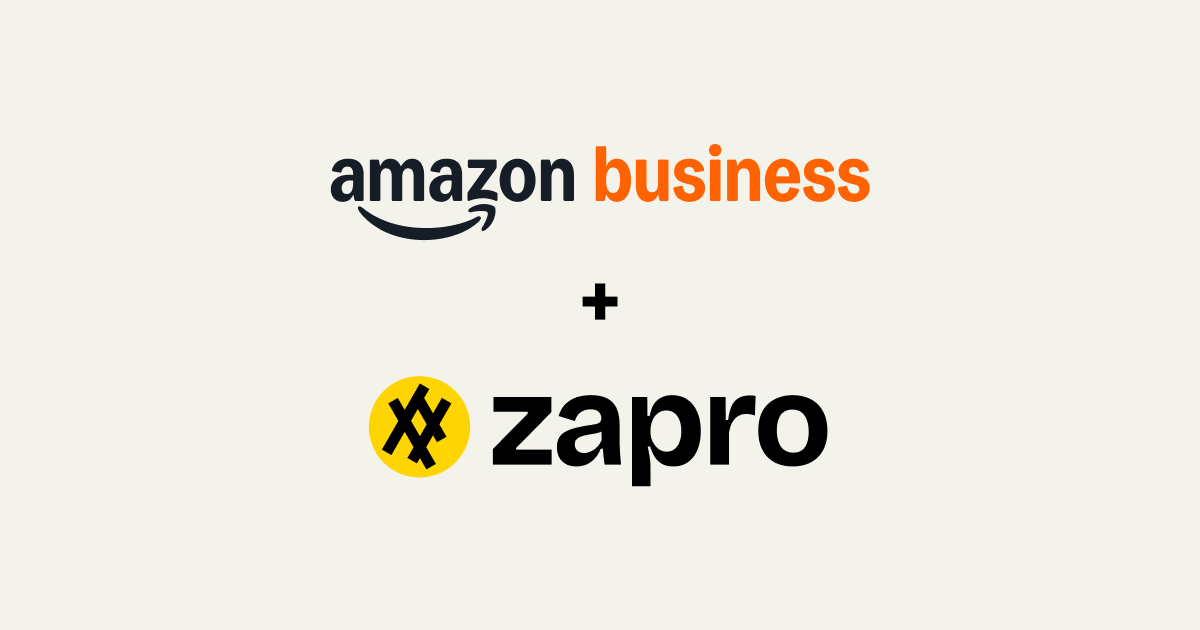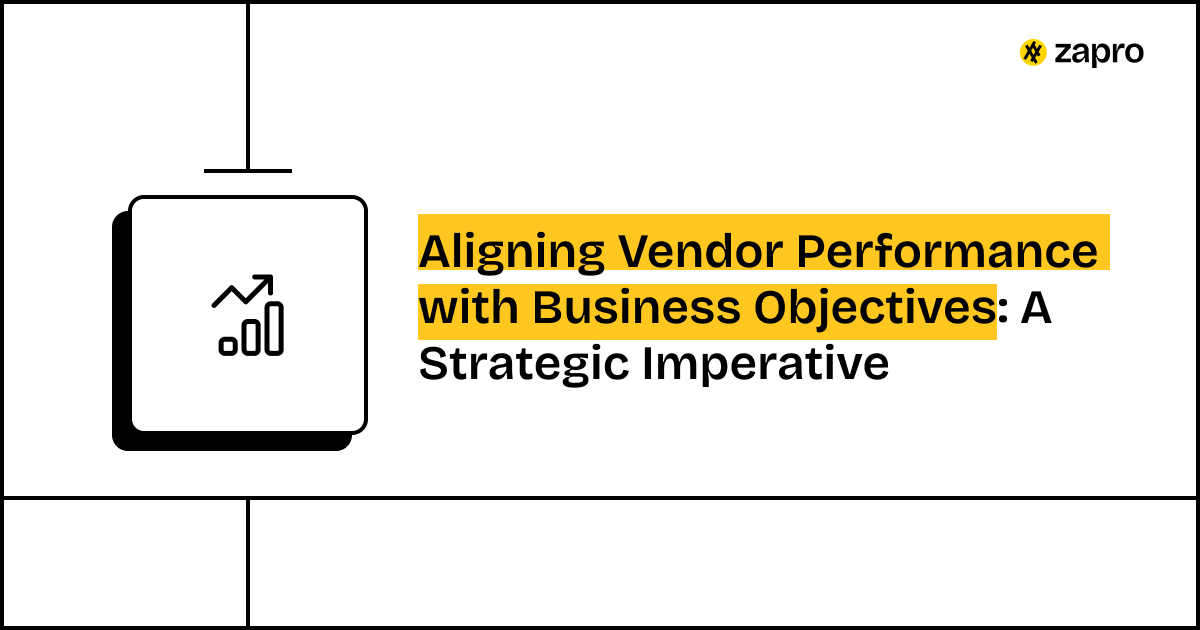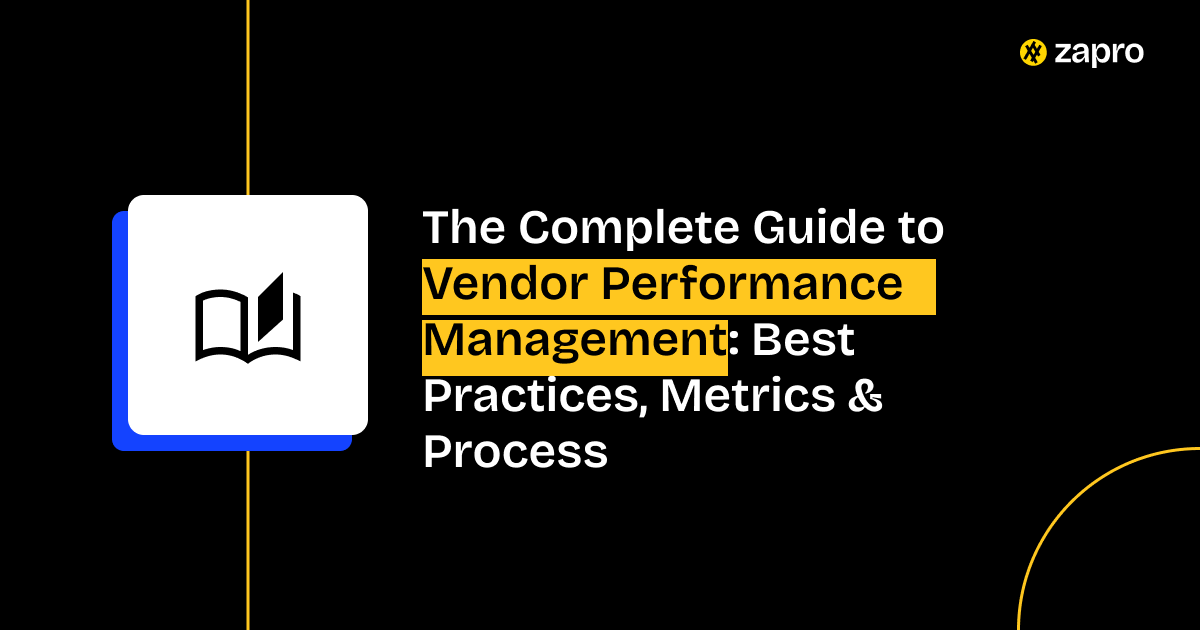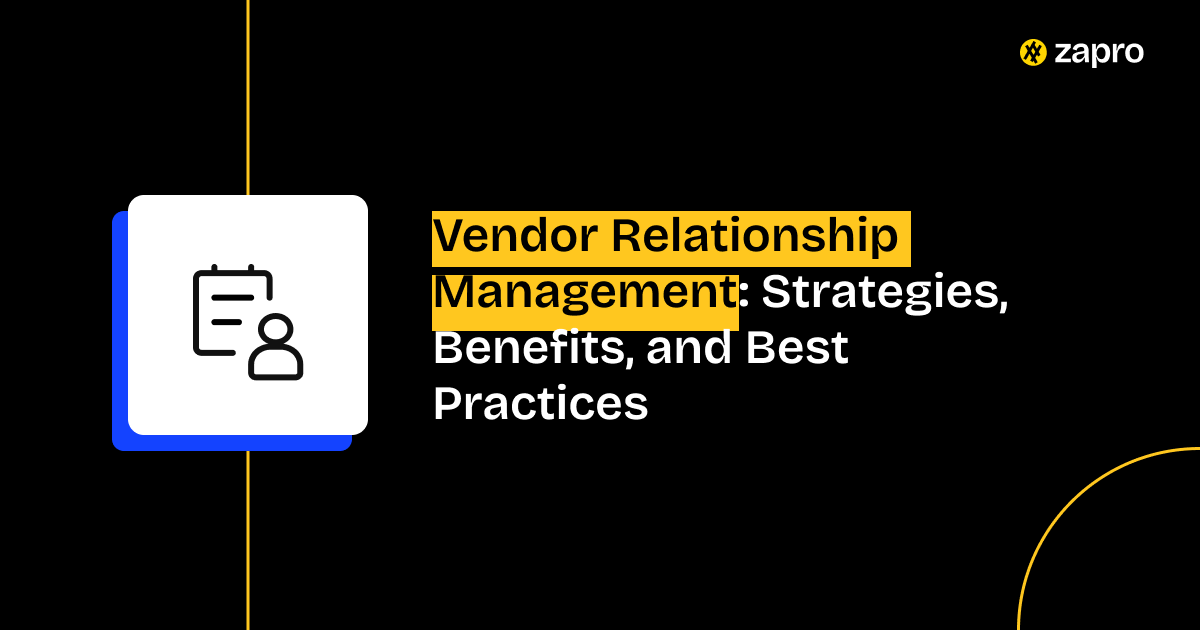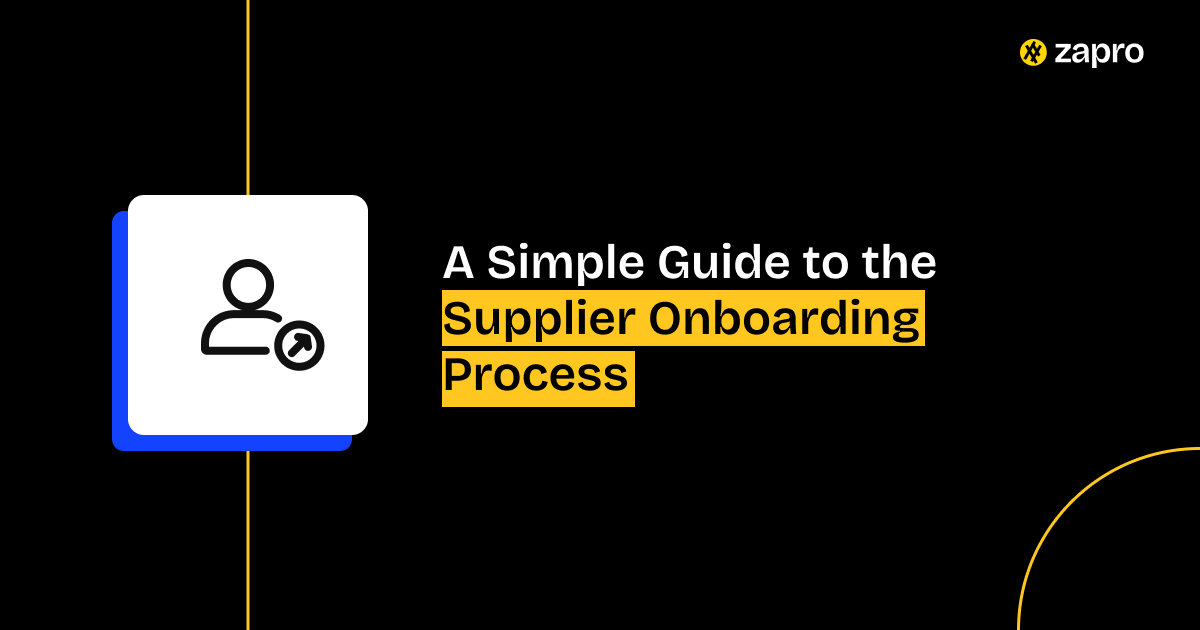Organizations track their performance but only a few of them use value-driven procurement systems. Organizations verify transactional performance metrics but they fail to create meaningful links between these metrics and their complete procurement business strategy. The absence of strategic vendor management emerges because vendor management teams dedicate long hours to work without reaching their strategic targets.
The problem exists because of the lack of connection between data points. The time has arrived to move past basic compliance requirements because organizations need to link vendor performance to business targets. The essential transition between operational procurement and strategic value creation represents the critical step for procurement to become a strategic business driver. The following guide demonstrates methods to establish connections between vendor activities and business requirements.
Introduction: The Disconnect Between Vendor Performance and Business Strategy
Organizations track performance metrics but only a few organizations use value-driven procurement methods. Organizations verify transactional performance metrics but they do not create effective relationships between these metrics and their complete procurement business strategy. The absence of strategic vendor management emerges because vendor management teams dedicate extensive time to work without reaching their strategic targets.
The problem stems from the absence of connection between data points. The time has arrived to advance past basic compliance requirements because organizations need to link vendor performance to business targets. The essential transition between operational procurement and strategic value creation represents the critical step for procurement to become a strategic business driver. The following guide demonstrates methods to establish connections between vendor activities and business requirements.
Understanding Your Core Business Objectives
Your ability to match vendors with your business needs depends on your understanding of your organization’s fundamental goals. Strategic goals exist within four essential categories which include:
- Revenue Growth: Organizations pursue market expansion through new market entry and product development.
- Profitability: Organizations focus on operational cost reduction and profit margin enhancement and waste elimination.
- Customer Satisfaction (CSAT/NPS): Organizations focus on delivering better products and faster services while decreasing customer complaints.
- Innovation: Organizations focus on technology development and market acceleration and product uniqueness creation.
- Risk Mitigation: Organizations maintain supply chain stability while following regulatory requirements and protecting themselves from financial risks and geopolitical threats.
Your procurement business strategy needs to use these objectives as its final performance evaluation system.

Vendor management no longer represents a contracting function in procurement; rather, firms have plans to create full supplier relationship life-cycle governance capabilities.
Mapping Business Objectives to Vendor Contributions
This is the bridge building phase. You need to deconstruct the big business goals into concrete actions your vendors can effectively deliver.
Deconstructing Business Goals into Key Supplier Deliverables
Take a top-level goal and break it down:
| Business Objective | Key Deliverable | Vendor Contribution |
| Increase Profit Margin (15%) | Reduce Total Cost of Ownership (TCO) | Cost Reduction Suggestions, Value Engineering Initiatives |
| Improve Customer NPS (10 points) | Flawless Product Quality, Faster Fulfillment | Defect Rate of Zero, Consistent Delivery Speed |
| Achieve Rapid Growth (25% YOY) | Scalable Production Capacity | Investment in New Capacity, Quick Lead Time Reduction |
This process defines your strategic vendor alignment without any delay and reveals the many facets of supplier value.
Identifying Critical Vendors for Each Objective Stream
The vendor selection process reveals that different suppliers support different organizational goals. The software provider plays an essential role in Innovation, but the raw materials supplier plays a vital role in achieving Profitability. You need to create a detailed connection between suppliers and their role in supporting specific strategic objectives. The process enables you to direct your efforts toward essential supplier meetings that produce meaningful results.
Developing Performance Metrics (KPIs) That Drive Strategic Alignment
Vendor performance business objectives achieve alignment through direct connections between vendor KPIs and strategic company objectives. The core principle of vendor KPI linkage exists in this concept.
Examples: Linking On-Time Delivery to Customer NPS
The achievement of better Customer Satisfaction (NPS) requires more than just OTD performance. You need:
- Strategic KPI: Order Fulfillment Cycle Time (from order placement to customer delivery).
- Vendor KPI Linkage: Lead Time Accuracy (the supplier needs to deliver products on schedule because this directly affects customer delivery times).
- Result: The result shows that better supply chain speed and precision leads to customer satisfaction which boosts NPS ratings to prove procurement software value delivery.
Examples: Linking Cost Savings to Profit Margin Improvement
The company focuses on achieving Profitability as its main strategic goal. The connection between these elements is straightforward.
• Strategic KPI: Gross Profit Margin.
• Vendor KPI Linkage: The vendor demonstrates actual cost savings through collaborative work and prevents price increases.
• Result: The vendor saves one dollar which directly adds to the company’s profit margin thus proving vendor return on investment.
Examples: The vendor needs to demonstrate product development innovation through specific performance metrics.
The company needs to track innovation performance through specific metrics because it focuses on fast growth and product development.
• Strategic KPI: Time to Market (TTM) for new products.
• Vendor KPI Linkage: The vendor needs to submit innovative ideas at a high rate while achieving success in joint development projects and demonstrating efficient technology transfer methods.
• Result: The vendor transforms into a collaborative partner who helps your company bring products to market faster while gaining a strategic market advantage.
Turn Vendor Relationships Into Strategic Assets

Communicating Strategic Alignment to Vendors
A successful aligned strategy requires both parties to understand the shared mission. The process requires you to advance past basic transactional requirements.
Sharing the ‘Why’ Behind Performance Expectations
The vendor needs to achieve 98% OTD for products X, Y, and Z because these items drive our 10-point NPS improvement goal for customers. The failure to meet this target will harm our ability to reach our goal.
The strategic vendor alignment communication process transforms vendors from basic suppliers into essential business partners who maintain required performance levels.
Fostering a Shared Understanding of Success
Success should be a fantastic win-win. Show the vendor how their outstanding performance in an aligned KPI translates into more business, preferred status, and a larger overall share of your spend. This creates a value driven procurement relationship.
Integrating Aligned Performance into Contracts and Reviews
The strategic alignment must be formally integrated into your relationship management framework.
Performance Clauses and Incentive Structures
Embed the strategically aligned KPIs directly into the contract. Furthermore, attach incentives and penalties to them:
- Incentive: Exceeding the Innovation KPI grants them automatic preferred vendor status for new projects.
- Penalty: Consistent failure to meet the Customer Satisfaction KPI (e.g., high defect rate) triggers a mandatory performance improvement plan.
Strategic Review Agendas
Every strategic supplier meetings (QBR/SBR) agenda should begin with a review of how the vendor’s performance overall is impacting your top three strategic objectives. Subsequently, all discussions about operational inadequacies or follow up actions should be framed by the larger business goal.
Leveraging Technology for Strategic VPM Alignment
Modern technology enables users to access all data facets through a unified interface which provides an effortless experience.
Data Visualization and Reporting on Strategic Impact
Your VPM system needs to establish visual connections between vendor KPI performance and business targets. The dashboard needs to display “95% OTD” alongside its direct connection to the 15% Profitability objective. The system delivers exceptional understanding which enables simple demonstration of procurement strategic worth to executive leaders.
Conclusion: Transforming Procurement into a Strategic Value Driver
Every contemporary procurement team needs to establish vendor performance alignment with their business targets as their essential future development step. The transition from basic metric monitoring to value-based procurement demands strategic vendor alignment for directing outstanding supplier actions toward business growth and profitability and customer satisfaction improvement.
Procurement evolves into a strategic organizational advantage through vendor KPI linkage implementation and Zapro.ai technology-based visualization of performance effects.
Do you want to identify KPIs which support your organization’s main strategic objective of Risk Mitigation?

Ready to Align Vendors With What Matters Most?
Join leading companies using Zapro to align vendor performance with business goals.
FAQ:
1. Why is aligning vendor performance with business objectives important?
When vendor performance directly supports your strategic goals, you gain better ROI, reduced risks, and stronger partnerships. Misalignment leads to wasted resources and missed opportunities. Modern procurement platforms help maintain this alignment through real-time performance tracking and automated scorecards.
2. What metrics should we track to ensure vendor alignment with our objectives?
Focus on metrics that matter to your business: delivery timelines, quality standards, cost efficiency, innovation contribution, and compliance rates. The key is choosing KPIs that directly connect to your strategic goals rather than generic benchmarks.
3. How often should we review vendor performance against business goals?
Quarterly reviews are standard, but continuous monitoring is ideal. Automated vendor management systems enable real-time visibility into performance trends, allowing you to address issues proactively rather than discovering problems months later.
4. What should we do when a vendor consistently underperforms?
Start with data-driven conversations using concrete performance metrics. If improvement plans don’t work, having a centralized vendor management system makes it easier to evaluate alternatives, manage transitions, and maintain business continuity.
5. Can technology really improve vendor-business alignment?
Absolutely. Digital procurement solutions provide centralized dashboards, automated performance tracking, and predictive analytics that help you identify alignment gaps early. This transforms vendor management from reactive firefighting to strategic partnership development.
Don’t miss our weekly updates
We’ll email you 1-3 times per week—and never share your information.

 Healthcare
Healthcare Financial Services
Financial Services Technology
Technology Venture Capitalist
Venture Capitalist Chief Procurement Officer
Chief Procurement Officer Chief Financial Officer
Chief Financial Officer